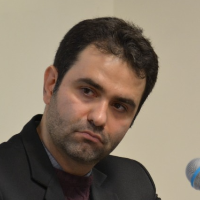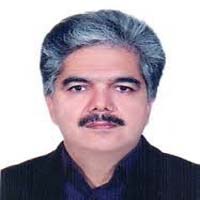M.A. Allameh Tabatabaee University, Tehran, Iran
Author(s):
Abstract:
Introduction
There is no agreement on what city and urban lifestyle are. It is not just about minimum factors that each city must have, but also about social interactions, social needs and individual perceptions which are dependent on cultural characteristics and geographical details. Generally speaking, cities have complex systems of transportation, sanitation, utilities, land usage, social connections and economic actions. These systems are always in the process of changing and developing. So, development of cities leads to new lifestyles and create what we may call urban life. Development of urban life causes concentration of equipments and resources in cities. Also, it is clear that a mere focus on quantitative facts of urban development is not enough to get to the efficient way of life. Hence researchers and managers have decided to pay more attention to factors which are more related to quality of urban life. In other words, after an initial attention to quantitative development of cities, the concept of quality of life is now getting attention in terms of qualitative factors. Due to this shift, a great deal of scientific and practical studies have been conducted and many new things have been revealed. Medical, sociological, psychological, environmental and economic points of views led to create new indexes and multidimensional frameworks. More than that, each city arrives at special findings which are linked to its local specifications. Because of diversity of results in different cases and cities, reaching to a shared and unique conclusion for urban quality of life is not easy. So the purpose of this study is to centralize and summarize the results of various studies on this topic in Iran. Meta-analysis is a research method for arriving at a specific knowledge from different studies. This research method was introduced in the late 1970s and soon became famous because of its abilities to get clear conclusions. Material and Methods
This paper has analyzed Iranian scientific studies on quality of life, which were published until 2012. Meta-analysis is a tool for integrating scattered results and achieving to a new understanding in order to develop boundaries of knowledge. Identifying patterns among study results, contrasting and combining different studies, identifying a common measure of size effects, overcoming bias and doing systematic reviews are different benefits and applications of this method. Some steps are taken in order to get a reliable meta-analysis. First of all, it was decided to find keywords which are related to urban quality of life. Based on ideas of experts and those keywords, all Persian scientific databases which could have articles related to quality of urban life were searched. Initially, 45 articles were included in the sample. Later on, however, some of these articles which were not scientifically acceptable or belonged to medical fields were excluded. After this process, 27 articles were selected, of which 17 articles are published in scientific peer-reviewed journals and the remaining 10 article in other journals. Based on these categories, it was decided to separate results into two different types: "results of studies published in peer-reviewed journals" and "result of studies published in non-peer-reviewed journals". After that, specific findings of articles were written and summarized. For doing this, 9 important dimensions were chosen which were used for filtering the articles. Table 1 provides a view of these indicators.Discussion of Results & Conclusions
Diversity of studies shows that Central, Northeast and Eastern provinces of Iran have more researchers who are interested in studying urban quality of life. Results showed that there are positive and significant relationships between social capital, higher income, being employed and urban quality of life. However, the relationship between gender and urban quality of life is not significant. Educational levels, gender, age, marital status and employment status are the common indicators which most of the researchers have used in their research. Social capital is one of the most important concepts which is used in correlation tests and results proved that there are significant and controversial relationships between social capital and urban quality of life in different cities.Unfortunately more than 60% of studies have not mentioned their research method. In addition, the issue of validity and reliability of these studies was not talked about either. Hence generating numerical facts, which is essential to measure size effects of these variables, is not possible. So, one of the most important findings of our meta-analysis is missed. This research shows that paying more attention to important parts of research articles, which directly effects quality of meta-analysis, is essentially important. Thus, enacting strict rules in journals about data gathering and article writing could be recommended to protect quality of future articles. Table 2 shows reliability and validity of the two different article types.Taking a multi-dimensional view and using combinatorial indexes are strength points of analyzed studies and neglecting sociological dimensions is weakness point of these studies. This research shows that Iranian researchers of quality of life focus on quantitative methods more than qualitative ones. But it is believed that using different and complex methods could be the way to create frameworks which are closer to real life. Table 3 shows situation of the two different groups of articles regarding different dimensions. Urban quality of life is a complex variable whose precise measurement is very difficult. Considering and rebuilding international frameworks for evaluating of this concept is a valuable way to do research. Some of the analyzed studies did in fact try to make specific and creative frameworks for evaluation of urban quality of life, paying more attention to specifications and characteristics of Iranian cities. So, for future research, we recommend designing native and practical models which could be adapted to Iranian culture.Keywords:
Language:
Persian
Published:
Journal of Applied Sociology the University of Isfahan, Volume:24 Issue: 2, 2013
Pages:
21 to 40
magiran.com/p1151453
دانلود و مطالعه متن این مقاله با یکی از روشهای زیر امکان پذیر است:
اشتراک شخصی
با عضویت و پرداخت آنلاین حق اشتراک یکساله به مبلغ 1,390,000ريال میتوانید 70 عنوان مطلب دانلود کنید!
اشتراک سازمانی
به کتابخانه دانشگاه یا محل کار خود پیشنهاد کنید تا اشتراک سازمانی این پایگاه را برای دسترسی نامحدود همه کاربران به متن مطالب تهیه نمایند!
توجه!
- حق عضویت دریافتی صرف حمایت از نشریات عضو و نگهداری، تکمیل و توسعه مگیران میشود.
- پرداخت حق اشتراک و دانلود مقالات اجازه بازنشر آن در سایر رسانههای چاپی و دیجیتال را به کاربر نمیدهد.
In order to view content subscription is required
Personal subscription
Subscribe magiran.com for 70 € euros via PayPal and download 70 articles during a year.
Organization subscription
Please contact us to subscribe your university or library for unlimited access!



